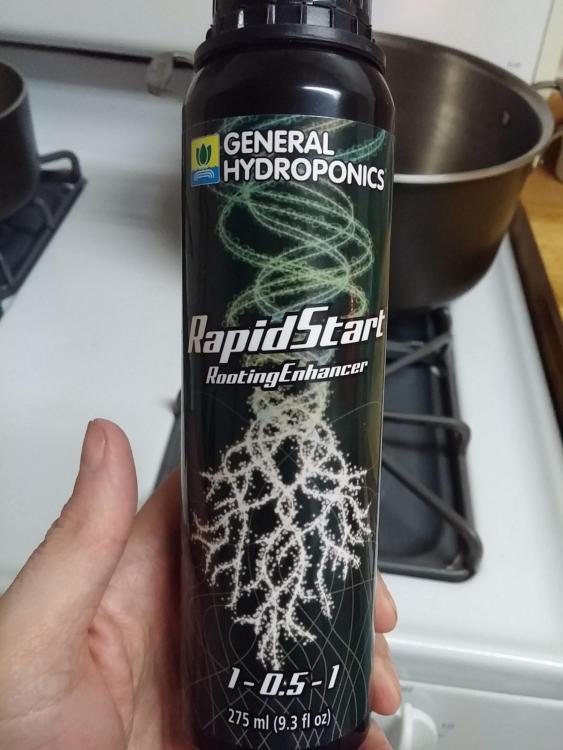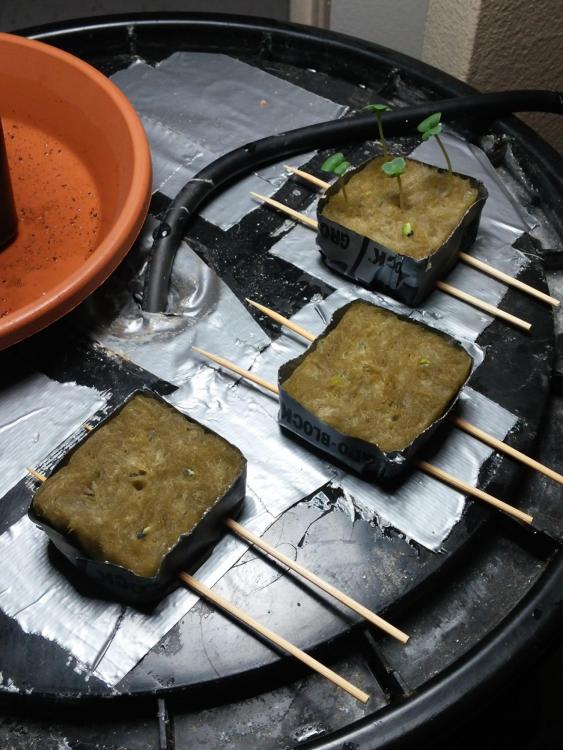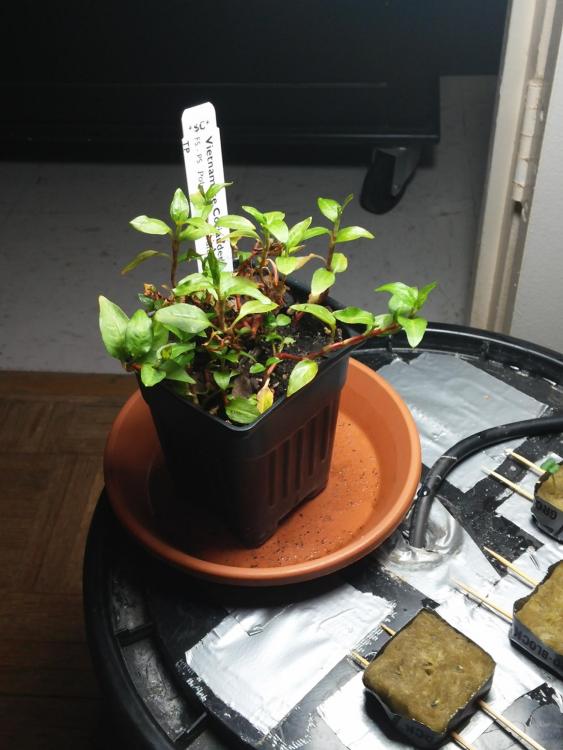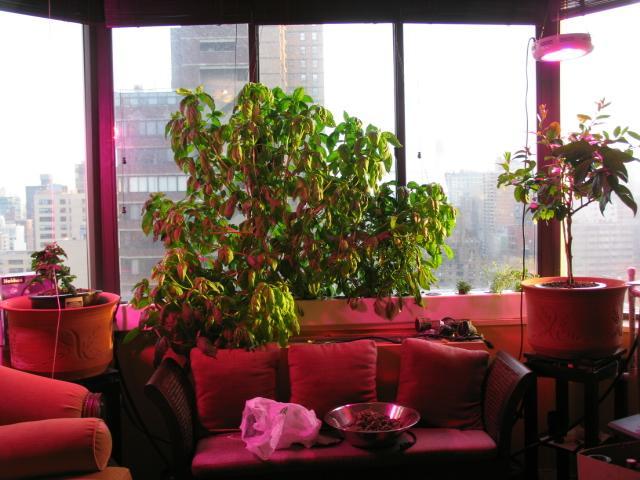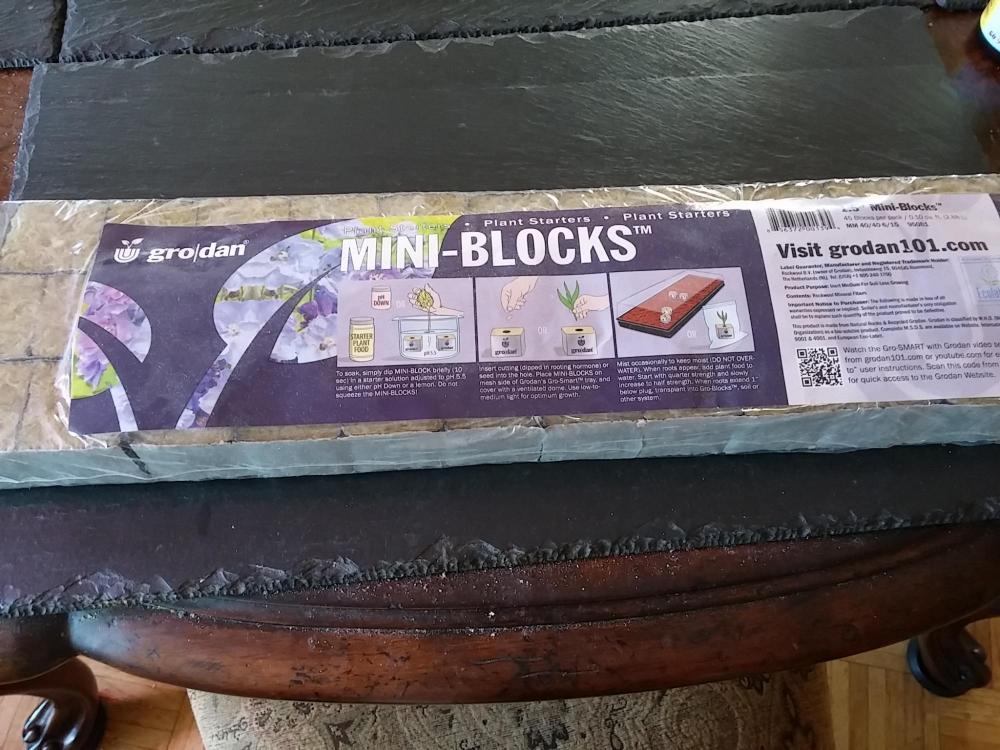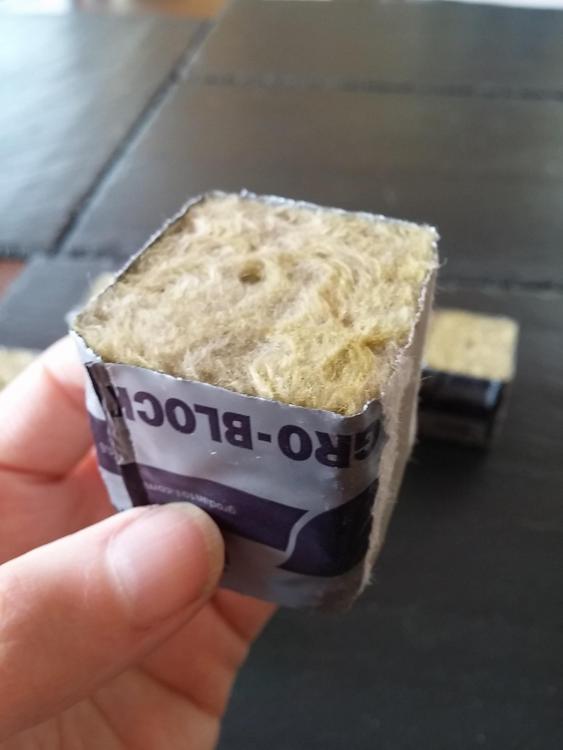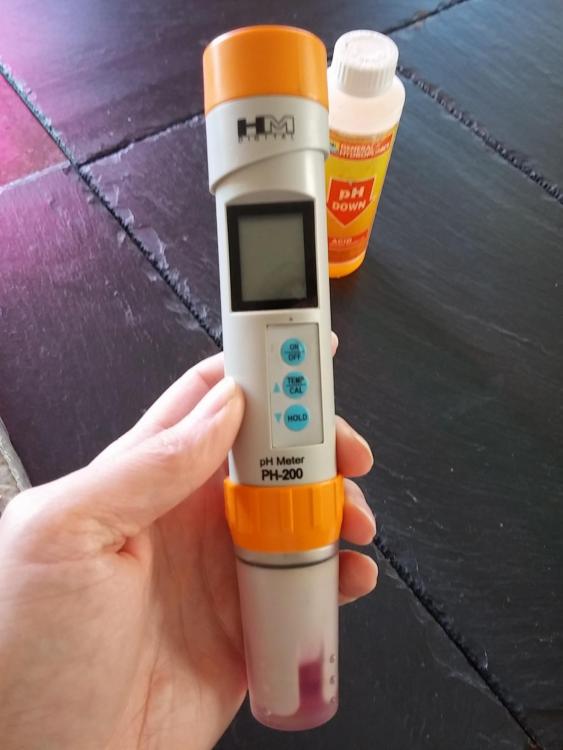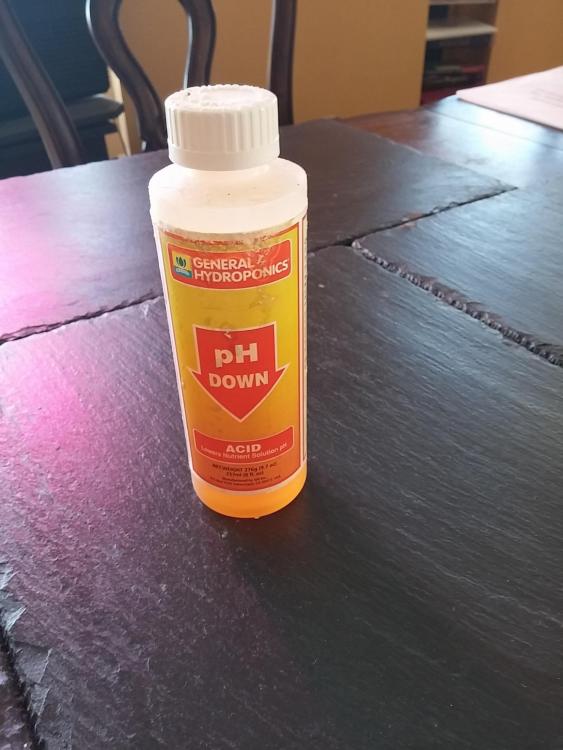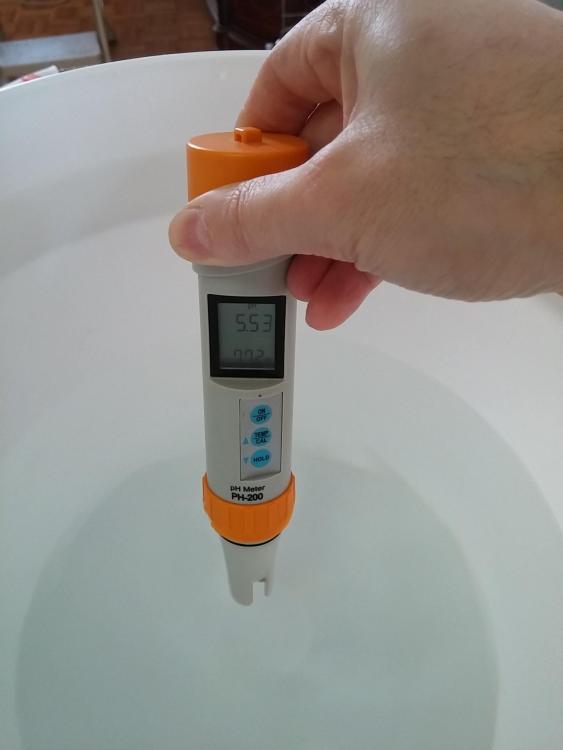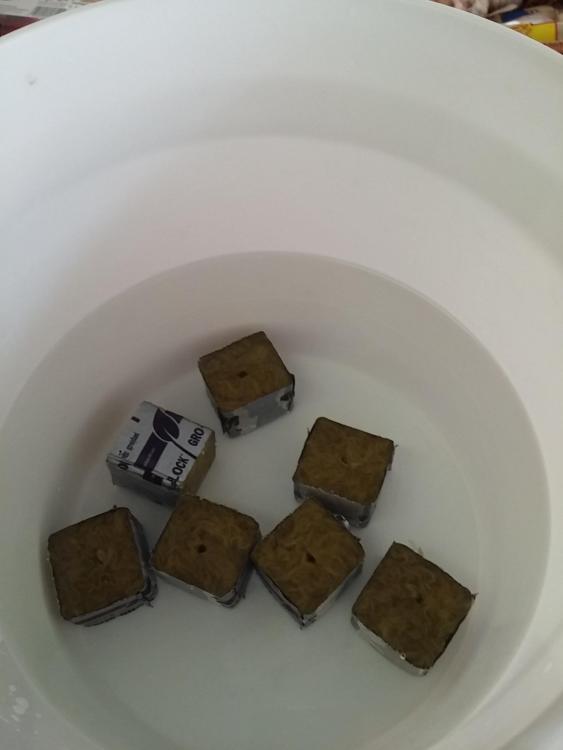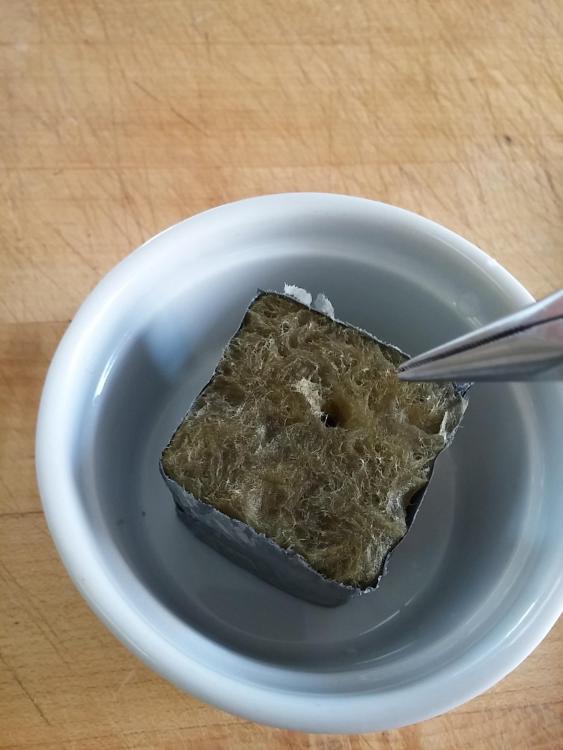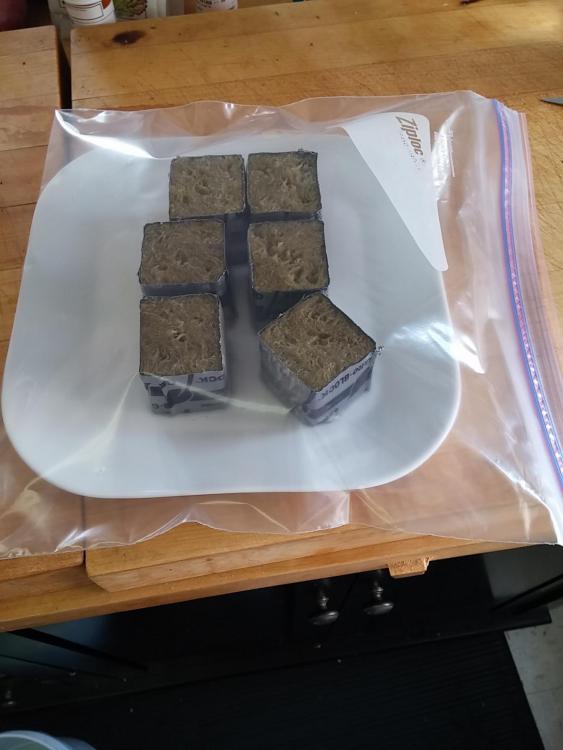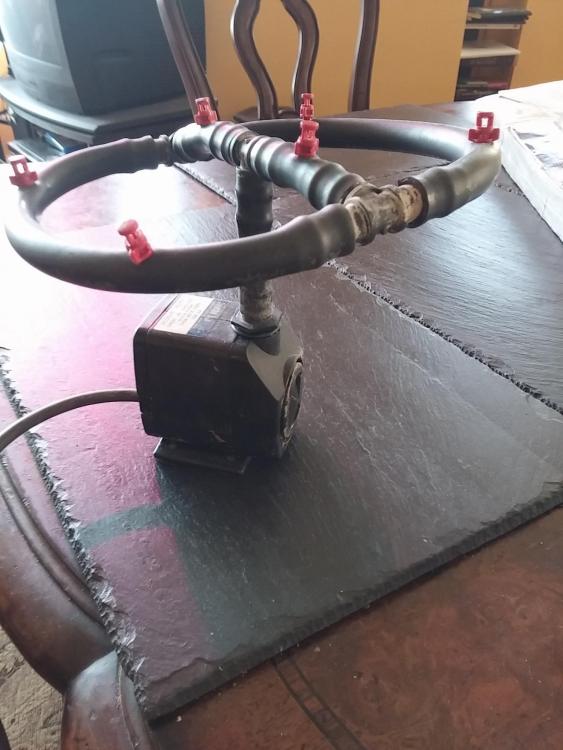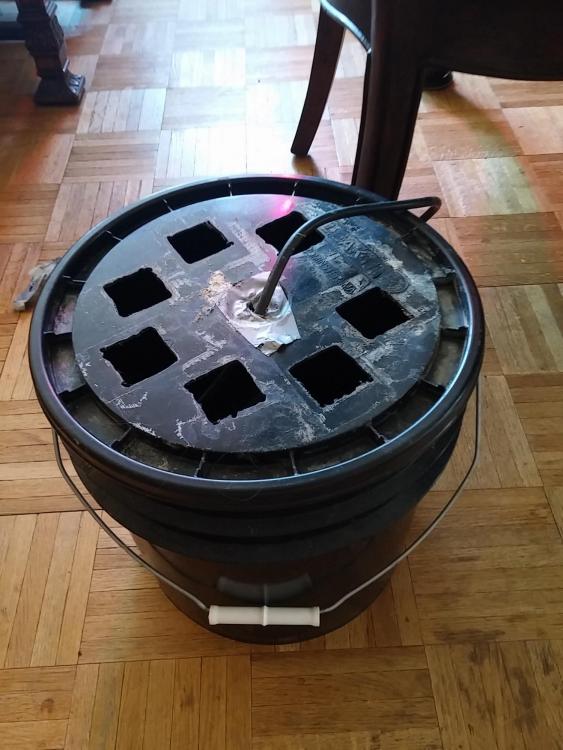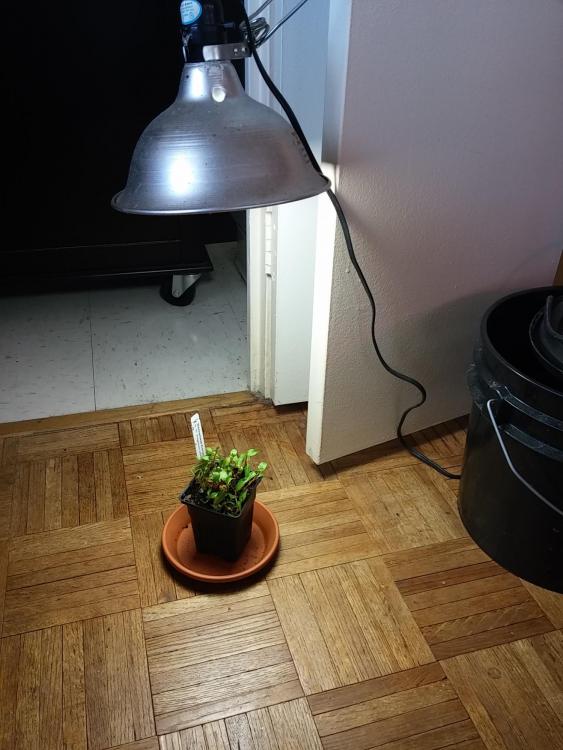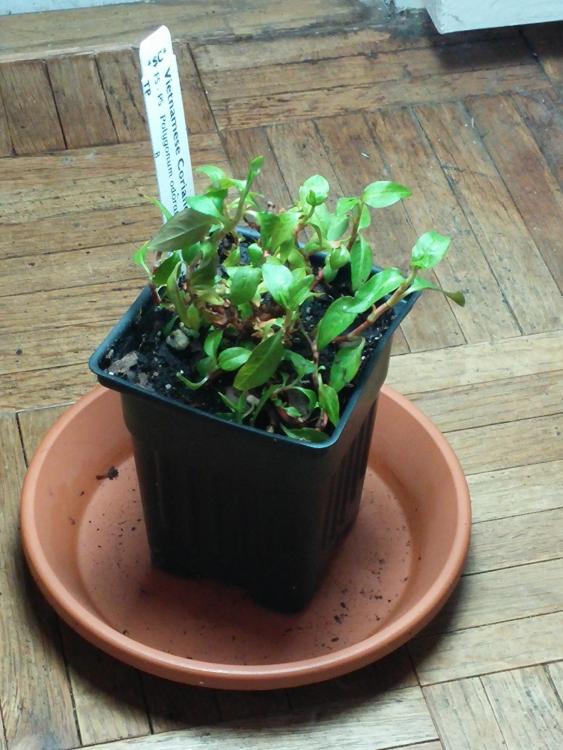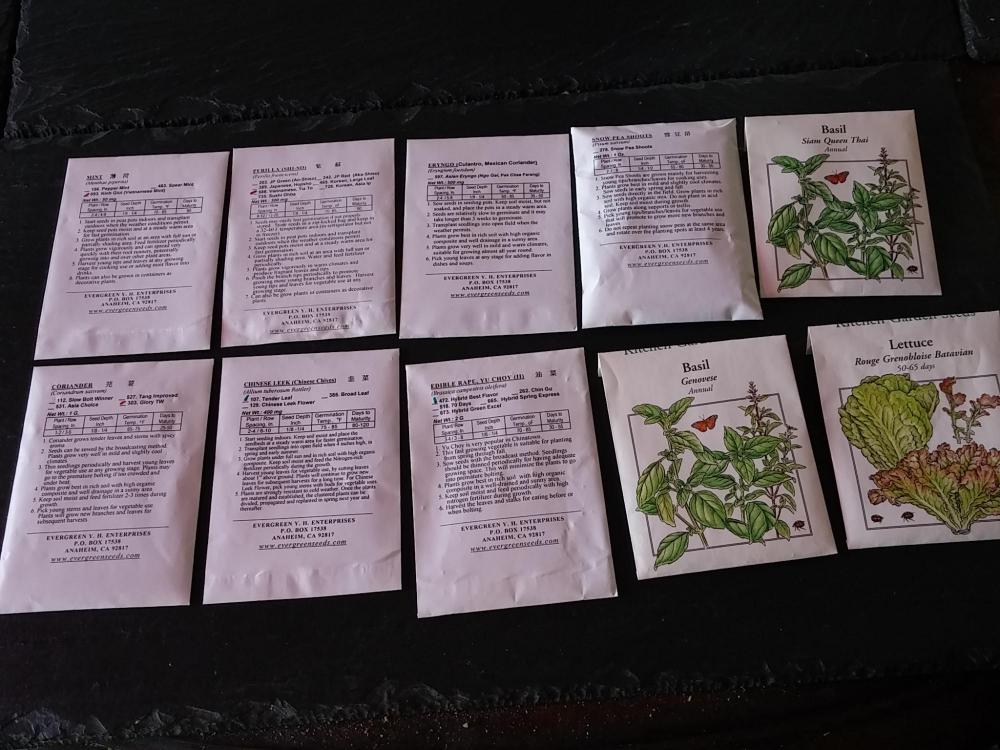
KennethT
participating member-
Posts
6,866 -
Joined
-
Last visited
Content Type
Profiles
Forums
Store
Help Articles
Everything posted by KennethT
-
@kbjesqI think those are rambutans, not lychee... regardless, I'm looking forward also! @TereI'll second Deryn's comment that we would love to hear about your travels, and see photos! You don't necessarily need to ask a host to do one - although I'm sure they appreciate it and have good ideas on how to keep people interested.... but I've done a few in the past (Saigon and Singapore over the last year...) just after I got home from my trips while everything was fresh in my mind, and I really enjoyed doing them. Not only is it fun to share the info with people who are genuinely interested, but it also helps to relive some of the great moments.. plus, I now have a record of my travels that I can re-read when planning stuff in the future!
-
@gfron1It seems that Pok Pok got rid of their webcam... I used to visit it all the time, back in the day when the did not accept reservations. Maybe they don't need it anymore now that people can make reservations through OpenTable...
-
There are a few places in NYC that do this. Atera (Ateranyc.com) has a U-shaped counter (if I remember correctly) that is like a bar. They also have a few tables, but most of the seating is counter based. There some photos on their website. Another is the chef's table at Brooklyn Fare in Brooklyn, as well as Momofuku Ko in the East Village in Manhattan. I'm sure there are others in NYC that do this as well, but these are the ones that come to mind first.
-
Pok Pok NY is a very popular thai restaurant, that, up until relatively recently, didn't take reservations... they didn't want to be bothered with people constantly calling for an estimated wait time for a table, so they set up a webcam fixed onto a white board, where the front door staff kept it updated with the average wait time. Obviously, this is a different application, but I used to visit their website to see the white board all the time. Another one who did something similar is the original location of Shake Shack, in Mad. Sq. park in NYC... they have a webcam near their entrance that allows you to see how long the line is, so you can estimate the wait time yourself. So putting a webcam on a whiteboard that shows the number of seats available is a good idea, IMO...
-
What's the "Popeye pizza"? Does that have something to do with spinach, or Popeye's, the fried chicken chain? Also, chicken granulocyte?
-
@cakewalkEven though your oven is 350F, the temperature inside your cake is much less - probably much less than 212, otherwise your cake would boil!
-
2 new sets of seeds have sprouted! Since I now have 3 sets that have sprouted, it's time to get the seedling garden up and running... this is the bucket with pump/sprayers I showed last time. Now, time to introduce another friend of the hydro gardener: This stuff is great. You use a very small amount - 2.5ml/gallon, and it increases the amount of fine root hairs and overall root mass which makes your plants much better at taking in nutrient. Here's a shot of the 3 cubes that have sprouted - you can really see the difference between which one sprouted yesterday, and which ones did today: Here's a shot showing the progress of the rau ram starter. I wasn't surprised to see that there were some bugs that came along with the plant, so the other day, I drenched the soil and then sprayed all surfaces of the plant with AzaMax - which is azadirachtin, an organic insecticide derived from Neem. You can tell that it's almost ready to clone by a couple of tips that are showing new growth. Here's a shot of the garden from a distance, where you can see the bucket and the light. I've been leaving the light on 24hours a day - I've found that young plants don't get shocked from the constant light, and in fact will give much faster growth... as they get older, they don't tolerate it anymore though.
-
I don't know if it's available in your area, but I like the Knife brand of peanut oil... I get it in a 1 gallon jug, and there's a big picture of a peanut on the label... it smells very pleasantly peanut-y...
-
I've been to restaurants in NYC that were 100% prepay (not including beverages or gratuity) and had no issues with it. For small restaurants with intricate menus, I understand that no shows can be extremely costly. Then again, other restaurants just require a credit card to hold the reservation, and then, if you don't show up, they charge a predetermined no-show fee, which is pretty much the cost of the tasting menu. I have no issue with either system because my attitude is that if I made a reservation at a place like that, I have no intention of not showing, other than some kind of natural disaster or catastrophe! Likewise, I haven't heard anyone else complain about these systems either, other than people who tend to double book, and those are the people who you're trying to make sure don't stiff you! Personally, I don't really see the point of a half down, half at cancellation deadline system... To me, it just makes everything more complicated... and I don't really see any benefit.
-
HC - I hope it doesn't snow next week!!!
-
I woke up to this this morning: I don't know which seeds these are that sprouted, but I think this is a record of some kind... less than 24 hours!
-
So, I finally got to planting some seeds this weekend, and I decided to do a little pictorial about how things are done in a hydro setup. I personally love hydroponic gardening for many reasons - being indoors, I can do it all year long, don't have to deal with bugs, and my hands never get dirty! Plus, it uses about a third the water as conventional gardening, and I can pack a lot more plants into the same space. Also, you can accelerate the growth and boost the flavor of many plants as you can hyper-oxygenate the root zone, and feed with very high concentrations of nutrients. To start, let me show a photo of my windowsill garden back in 2012, when I was more active with it... the large bush you see in the middle of the photo is only 3 Genovese basil plants, which were extremely aromatic. When I had to tear them down, I gave them to a friend who makes pesto, and he said that it made about 8-9 cups of basil puree! So, here is how I do it. The trough you see above on the windowsill is just that - a trough. It's actually a 10 foot length of 4"x4" PVC that I glued end caps to both ends using aquarium silicone, and drilled holes in the top for the plants. Inside the trough is a length of 3/4" PVC pipe that runs the length of the trough, and has small holes drilled in between each plant site. The holes were tapped, and I screwed in these little plastic spray nozzles you can get. This PVC pipe is attached to a submersible pump that sits in the reservoir (a 5 gallon bucket that sits under the couch), and then there is a drain at one end of the 4x4 that goes back to the reservoir. What this does is create a about a half inch of nutrient fluid along the bottom of the trough that is constantly being replenished... and all those sprayers (that do the replenishing) hyperoxygenate the fluid, which eliminates any rot and supercharges plant growth. The plants sit in little pots in the top of the trough, and their roots lay in the river of nutrient fluid in the bottom. This is a modification of the NFT (nutrient film technique) method of hydroponics, which is commonly used in greenhouses to grow all kinds of leafy plants, but while it is a bit more complicated, I think it achieves superior results - but may be unwieldy for a large scale production. So here's how I get started. I like to use this substrate as a place to anchor the plant: These are 1.5" cubes of rockwool. It is good for plants because once it is saturated, it holds an optimal amount of water and air, so seeds and new roots won't drown. It is wicking, so once the plants are in, you can spray from one side to soak the whole thing. It is also pH neutral - it won't degrade to clog anything, and won't change the pH of your system over time.. Here's a cube up close: The first thing you have to do is get some plain water and correct the pH - about 5.5 is optimal... So this is a tool that every hydro gardener needs, a pH meter: I take about a gallon of water (it just makes adjusting the pH easier, as you'll see in a second). To the water, I add this: This is phosphoric acid. You definitely don't want to get it in your eyes or on your hands. It is very concentrated - just a couple of drops in a gallon of water is enough to bring my pH into the proper range. So, the first thing you do is saturate your rockwool cubes - you do this by dropping them in the bucket for about 10 minutes: Once saturated, you take a block out without squeezing it, and stick in your seeds to the desired depth, which varies depending on the type of seed. I use a pair of stainless steel pliers (the original purpose was to get bones out of salmon filets) to push the seeds to the desired depth. I dry the pliers after each seed is planted so I don't contaminate the rest of the seeds - I only plant 5 seeds or so per block, and there are tons in even the smallest pack of seeds! Once all the blocks are finished, I put them on a plate and into a zip lock bag so they don't dry out. Most hydro gardeners recommend putting the tray of blocks on a heating pad for optimal seed starting, but since I don't have one that doesn't turn off every 2 hours, I stick it on top of the refrigerator. I also put some of the 5.5pH water into a spray bottle to mist the top of the cubes every day. Once the seeds have sprouted, they'll go in my homemade cloning machine. You can buy these devices, but it's pretty simple to make your own - they're good for seed starting and for cloning existing plants, which I'll do in a week or so after my rau ram plant gets a little older and stronger. The cloning machine is basically a bucket with submersible pump and a bunch of sprayer nozzles: The sprayer nozzles create a carpet of nutrient spray which constantly bathes the bottom of the rockwell cubes with weak nutrient fluid. Once the plant roots get long enough to reach the bottom of my trough, they'll be transferred into the main garden. Here is a closeup of the pump sprayer manifold: Here you can see the sprayers pretty well. Here is the whole thing together - the square cutouts are about the right size for the rockwool blocks to fit in. I usually stick a toothpick through each one so they don't fall through by accident. As you can see, my cloning machine has space for 7 plants. Today, I planted 6 sets of seeds, as I expect one slot to be filled with the rau ram clone by the time the seeds have sprouted. I also planted 1 more - the sawtooth coriander... according to the package, it can take sawtooth up to 3 WEEKS to germinate! Once these seeds have germinated, and done their initial growth in the bucket, I'll transfer them to the main garden, and start the rest of my seeds. Today, I planted two different lettuces, pea shoots (great as a vegetable for stir fry), yu choi (another vegetable for stir fry - in the photo the plant looked very similar to what I had every day in Singapore, but they called it "baby kailan".... I haven't been able to find anything like it anywhere, and it actually looked nothing like normal kailan (aka chinese broccoli) at any stage of growth that I've ever seen), sawtooth coriander, Genovese basil (Italian), and thai basil. Waiting in the wings are the kinh gioi (vietnamese mint), garlic chives, regular coriander (cilantro), and tia to (vietnamese perilla).
-
@ShelbyThat looks awesome!
-
Fantastic Anna!
-
Finally! My rau ram plant, and my other herb seeds have arrived! The plant is a little too young to clone yet, so I'll give it a bit of time under the light to get it stronger after it's trip... I don't know if you can read the selections on the bags (especially the b/w ones) so we have: Coriander (cilantro), Tia To (Vietnamese perilla), Sawtooth coriander, snow pea shoots, Kinh Gioi (vietnamese mint), chinese leek (chives), Yu Choy. The colorful seeds are a couple years old that I got from John Scheepers... we'll see if they're still good. I can already foresee a problem with the kinh gioi - since it will send runners up and down my plant trough... but we'll cross that bridge when we get to it! I was thinking about doing a pictorial for planting seeds and cloning the rau ram in a hydroponic setup... should I do that here, or should I make a separate thread?
-
If you wanted to get started cooking things that don't take a long time (fish, seafood, chicken breast) before investing in a circulator, you can definitely do it in a pot of water on top of the stove and a ziplock bag with a reasonably accurate instant read thermometer. For information on cooking times and safety, see the Douglas Baldwin guide or the Sous Vide index posted above. Some people even did long term cooks (like short ribs, pork belly) in a pot of covered water in the oven, but that's a bit more complicated to keep the temperature moderately stable for a long period of time.
-
Yes! As long as the weather stays mild early this week, I will be getting my rau ram plant soon! I was doing some research, and it seems that this plant is not grown from seed, but only from cuttings. I called my friends at Well Sweep herb farm, in NJ, who have a ridiculous variety of herb plants, and they are going to ship Monday as long as it'll be warm enough for the few days after that. If I wasn't so busy, I'd just go there to pick it up, but it's probably over an hour's drive for me to get there, and then I have the cost of the toll, which would be more than the cost of shipping! Once it arrives, I'll have to do my normal routine when bringing in plants grown in soil (which could be harboring all kinds of pests... this includes quarantine away from all other plants, get the plant nice and healthy prior to taking the cutting, and also a dose or two of azadirachtin, which is an organic insecticide which works great for mites, thrips, aphids and other pests that are common around here. It is also safe to use on plants to be eaten - it can even be used up to the day of harvest! Once the quarantine period is over, I'll show how I clone it by rooting a cutting....
-
Wow Shelby... crazy! Glad you're ok! Back on topic, do you know if your cilantro is the slow bolting kind? I've never had luck with cilantro - it always bolts so fast... then again, my windowsill does get warm enough that we need the a/c, even in winter! When I plant my seeds soon, I'm going to try again with the cilantro, but I don't have my hopes up...
-
I don't have personal experience with it, but I would imagine that a standard Pyrex flask should be just fine - I imagine the seal on the rubber stopper would probably break before the flask does, unless there's a preexisting chip or crack.
-
@Anna NI find for lettuce, and for other green leafy things, especially when young, a compact fluorescent bulb is all you need. I got one from the Home Depot that is supposed to have a "natural light" output, which means that the color spectrum is not as cold and blue as a standard fluorescent... it works well for seed starting and cloning. I also bought (from the HD) a clamp on light fixture so I can just clamp my compact fluorescent bulb about a foot above the plants. I should be getting my herb seeds soon, so I'll show you what I do in more detail then. My set up is more complicated because I'm not using soil, the theory is similar.
-
@cazzueyEvaporation is a cooling process, so while the liquid may start at room temperature, as it "boils", it will lose heat and will get colder and colder... so the hotplate is used to keep it "warm"
-
Nice job... for next time (if there ever is a next time) I have 2 words: naval jelly... or 2 others: muriatic acid! Saves a lot of elbow grease... but you need some to wash the stuff off once it's done its job.... Another thing that saves time is a wire brush that you can put in an electric drill.... buff off the majority of the rust, and then use the acid or jelly so it goes faster. And then season right away - it'll start rusting right away after the muriatic acid treatment since it's so clean!
-
Sorry - I should have said 'visible light'....
-
Watt is a measure of work, or power, so it can describe electrical power, sound power, or thermal power... but I've never heard it describe light power... Light intensity is typically measured in Lumens, or Candlepower... Nowadays, when you see an energy efficient "60 Watt light bulb" that uses only 9 Watts, it's not that it puts out "60 Watts of light" but they are letting you know that the Lumen output of the bulb is equivalent to that of a standard 60 Watt incandescent. Nowadays, most greenhouse lighting specialists refer to a light's PAR value rather than straight lumen output, since plants only require a specific spectrum for photosynthesis, and most bulbs' output is over a much larger spectrum, which results in a lot of 'wasted' light - so an LED fixture with a certain lumen output may have a higher PAR value than an incandescent or fluorescent bulb of the same or even higher higher lumen output.
-
@dcarchYou are correct, but a 400W LED puts out a LOT more light than a 400W MH... the reason why LEDs are so much cooler is that a 250W LED has the equivalent light output of 1000W MH. It is also true that the lifetime is based on the fan lifetime - but my small, 100W light has 3 small cooling fans that blow on the heat sink, and it has so far lasted for at least 5 years, during which time I would have had to replace a MH bulb 5 times. You need to replace the MH/sodium bulbs every 6 months or so because around that time, their light output is diminished by almost half, even though they use the same amount of power. LEDs do not lose intensity over their lifetime by any practical amount. Consider that the cost of 1 MH/sodium bulb is about the same as my whole LED fixture, and you can do the math... And while demand is higher (in some states) due to the legality of growing cannibis, I've found that LEDs are still coming down in price on a regular basis, or to put another way, you can get a lot more light output for the same $$. With the increased demand, there are also a lot more companies making LED fixtures, so there is no supply constraint that would artificially raise prices, and as the technology grows, the cost of each LED per W or per lumen is coming down all the time.


